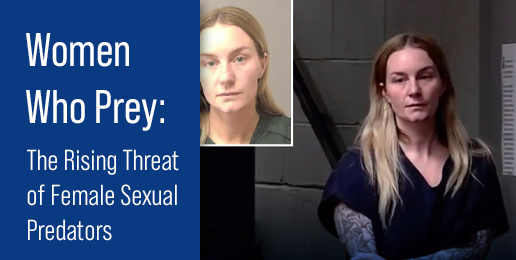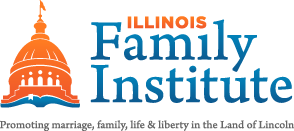
Alley Bardfield, a 32-year-old substitute teacher in Decatur, Illinois, pleaded guilty in early August to predatory criminal sexual assault of an 11-year-old male student.
She admitted to two years of grooming and sexual encounters with the boy, some of which took place during overnight visits to her home.
Bardfield’s guilty plea represents a growing number of abuse incidents by female teachers. In fact, abuse by female teachers has become disturbingly familiar. She faces sentencing on September 25, 2025, with the state agreeing to recommend no more than 40 years imprisonment.
Fifty years ago, I don’t recall reading about a single case involving a female teacher and a male student, certainly not an 11-year-old male student.
Are women becoming more predatory? If so, why?
Some researchers dismiss the apparent increase as a mere reporting error. We were not as adept at recognizing sexual abuse by females in the past as we are today, they claim. Even today, there remains a tendency to underreport female perpetrators.
The Bureau of Justice Statistics (BJS) shows that women account for a tiny percentage of arrests for sexual offences, approximately 2.2% of all such arrests. However, victim surveys show that women account for approximately 11.6% of perpetrators. This dramatic gap indicates widespread under-recognition of female-perpetrated abuse, particularly when the victim is a male adolescent.
The gap has always been there, but today, we are at least catching a few of them—so they would argue.
This argument is unconvincing. There is much more to it.
The most powerful contributor to what I see as a growing abuse epidemic of female perpetrators is the increasing sexualization of our culture since the issuance of the Kinsey Reports. Sexuality has become normalized. No longer is it seen as confined to marriage in any part of our culture, except, maybe, the churches.
Children are being raised to view sex as casual entertainment. Current sex education programs for use in all grades of schools encourage sexual experimentation, including experimenting with both same-sex and opposite sex sexual activities.
The dominant sex education materials for our children normalize these.
Abstinence-only sex education programs have become increasingly rare, and our broader culture—entertainment and media—mocks that approach to sexuality.
Increasingly, today’s teachers have been raised in this sexualized culture, predisposing them to view sexuality much differently than in years past. At the same time, there has been a diminishing focus on character development.
Moral authority has eroded, and with it there has been a decline of the shared religious and civic values of restraint, self-denial, and duty. Instead of promoting virtues like courage, temperance, fidelity, and honor, we have elevated authenticity, self-expression, and fulfilling our needs as preeminent.
Our culture has pivoted from promoting responsibility to embracing self-fulfillment.
Many other factors interact with our diminished character and have contributed to the rise of predatory females. For example, schools have weak oversight of teacher/student interactions. Often, there is a lack of policies in place that regulate the teacher/student interactions and communications outside of class.
For teachers who lack the internal controls that strong character qualities provide, strong external controls are required to diminish the risk to children. Those strong controls do not exist.
Our increasingly digital world has enhanced the ability for teachers to engage in grooming activities in secret. Children have their own cell phones, and a multiplicity of apps allows for private communication without any oversight. Calls can be made anytime, day or night, text messages, videos, photos, and even money can be exchanged in total secrecy.
Pornography has played a big part in the problem as well. Not much is said about pornography directed at women, but it is an issue that affects women as much as it does men. The difference is in its manifestation. For men, who are more visual, the problem is X-rated photos and videos. For women, it’s X-rated stories.
Highly erotic “romance” novels have become ubiquitous. Thousands of “romance” novelists are producing tens of thousands of stories, and women are emptying the shelves. The Fifty Shades of Grey series, which some have called “mommy porn” that combines BDSM with traditional romantic fantasy, has sold 45 million volumes in the U.S. and over 165 million worldwide.
Even Stacey Abrams, the twice former gubernatorial candidate, is a romance novelist. Under the pen name, Selena Montgomery, Abrams wrote eight highly erotic romance novels between 1999 and 2009. She sold more than 100,000 copies and reportedly made several million dollars, somewhere between $3 and $10 million.
Such novels indulge women’s fantasies in similar ways that images indulge men’s.
Fantasy seems to drive much of the female teacher/student abuse, since research shows the heterosexual teacher-lover/nurturer typically believes that the relationship is mutual and beneficial. This self-delusion can exist because of the scripts they create in their own minds, scripts which are drawn from the twisted sexual themes in our culture, from the movies and TV shows they watch, from the books and articles they read.
It comes from the very sex-ed materials that are taught in their own schools.
Several immediate changes could be made that would significantly reduce the vulnerability of children.
One of the first things is to get rid of sex education, other than the biology of reproduction, and education on good touch, bad touch. Leave the rest to the parents. Churches should take this up, too, rather than ignoring it as they have for. . . well, forever.
Get secular morality out of the schools. The only morality that should be taught in our schools is the morality that is embodied in our Constitution and laws, which were based on biblical principles. And those are the only moral principles that should be taught.
The second thing is to eliminate all private digital contact between staff and students. Instead, all communication should be conducted through school channels that can be reviewed and audited. Random checks and communication audits should be implemented, and severe penalties for violations should be established.
Glass panels should be installed in all classroom doors. There should be an open-door policy for all tutoring and conferences. Administrators should conduct frequent, unannounced observations.
All private interactions should include two adults.
There should be a committee established in every school to receive and act on concerns or suspicions (anonymous or on the record) from any teacher or student. That committee should be patterned after Charol Shakeshaft’s recommendation in her book, Organizational Betrayal: How Schools Enable Sexual Misconduct and How to Stop It. Essentially, she says it should be organized as follows:
- Multidisciplinary Composition
- Include administrators, teachers, psychologists, police, and ideally a parent or community representative.
- Avoid placing sole authority in the hands of one administrator—this reduces bias and increases transparency.
- Clear Mandate and Authority
- The committee must have the explicit authority to receive, review, and escalate concerns.
- It should not be advisory-only—it must be empowered to initiate investigations or refer cases to external agencies when needed.
- Anonymous and Confidential Channels
- Allow for anonymous reporting by students and staff.
- Ensure confidentiality protections for whistleblowers to prevent retaliation.
- Training and Awareness
- All school personnel and students should be trained annually on how to report concerns and what the committee does.
- Posters, handbooks, and digital portals should make the process visible and accessible.
- Boundary-Specific Oversight
- The committee should be trained to recognize boundary violations, not just overt abuse.
- This includes grooming behaviors, inappropriate communication, and favoritism.
- Regular Review and Public Accountability
- Publish annual reports (with anonymized data) on the number and type of concerns received.
- Use findings to improve policy, training, and supervision.
Background investigations for all teachers, including full-time, part-time, and substitute teachers, require improvement. Criminal checks, of course, have to be standard, but there needs to be a much greater focus on character.
We need to reestablish virtue as a requirement for teaching in public schools.
All schools need to take affirmative actions to empower parents in line with the U.S. Supreme Court’s reaffirmation of parental rights in Mahmoud v. Taylor. Parents, not teachers, should have control over what their children are taught. What is being taught in schools must be fully transparent.
Public posting of all instructional materials must be made 30 days before adoption. Opt-out procedures with automatic parental notification must be simplified.
Parents must take more responsibility themselves, as well. In the Alley Bardfield case, some of the sexual encounters reportedly occurred during multiple “play dates” at the teacher’s home, some of them involving overnight stays.
Where were the parents? There is no way the school could have known the teacher was having play dates with a student, some of which were overnight, but the parents had to know.
Parents not only need to mobilize to provide school board accountability, to find and support candidates that support parental rights and common sense educational policies, to share information about district policies, but they also must teach parents how to recognize grooming behaviors, what to look for to identify predators, and how to protect their children from exploitation.
This is not optional.
Children have a right to expect their parents to look out for them and to be equipped to do so.
The Bardfield case is not an anomaly.
It is the result of neglect, cultural decay, institutional failure, and technological vulnerability converging to harm an 11-year-old child. Without immediate and comprehensive action, such cases will proliferate, destroying young lives and further eroding public trust in our educational institutions.
Ultimately, the responsibility for this neglect, decay, and failure rests at the doorstep of our churches. Churches everywhere have failed to push back against what is clearly the systemic attack by the principalities, the powers, the rulers of darkness and spiritual wickedness in the halls of power, to paraphrase Ephesians 6:12.
The church has let this happen by its inaction, by its failure to speak out, by its outright refusal to directly challenge the evil that has crept into our culture.
Call on your pastors to speak out and demand that our schools take more effective steps to protect children.























